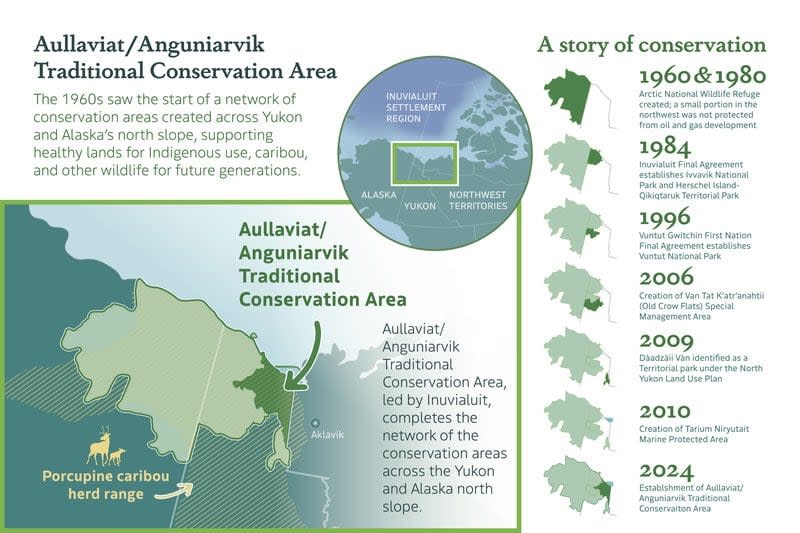New conservation area on northeast Yukon coast now under Inuvialuit stewardship
The northeast coast of the Yukon is now under Inuvialuit stewardship.
The Aullaviat/Anguniarvik Traditional Conservation Area is being made official with a signing in Aklavik, N.W.T., Wednesday afternoon. The region is traditionally used by the Inuvialuit people who live in Aklavik and Inuvik to hunt caribou.
A management plan is being developed between the Inuvialuit, territorial and federal governments.
The area is named Aullaviat/Anguniarvik, Inuvialuktun for "where wildlife and people travel, a place to hunt." It covers more than 850,000 hectares of land — 8,500 square kilometres, or roughly 1.8 per cent of the Yukon.
The Porcupine caribou herd lives in the area, as well as muskox, moose, grizzly and polar bears and migratory birds and fish.
The signing in Aklavik Wednesday is meant to showcase the land and culture to visitors and to those who tune into the livestream by the Inuvialuit Communications Society.

A group tour is planned for Thursday morning to bring people out to a cabin near the community.
"This is significant because we have worked on this for many years," said William Storr, who sits on the working group and is the president of the Aklavik Hunters and Trappers Committee.
"We did it with a lot of support from co-management partners and Inuvialuit."
Storr said the area is popular with people from Aklavik.
"That's our mainstay for harvesting, our biggest harvesting place for Inuvialuit of Aklavik. We have been doing this for many, many, many years," said Storr.
"It's rich in wildlife and has a lot of cultural meaning to our community. A lot of our elders and a lot of people from around here were brought up on the land and in the Yukon north slope."

Storr said the land is beautiful and he is proud to be part of the group working to protect it.
"The Porcupine caribou all migrate through the area. We have a lot of other stuff we use, like waterfowl and other birds. There is also whaling and char — we harvest a lot of that down the north coast," said Storr.
The signing means the Inuvialuit are the official stewards of the region, which Storr said is a strong acknowledgement of their long history in the region.
"It gives us a means to get our community out there to monitor it, we have land guardians we have hired, we want to continue taking out our beneficiaries out on the land, showing them harvesting skills and maintaining our culture," said Storr.
"We're looking at showcasing the area because we are proud of it," he said.
"It's near and dear to our hearts."
Jennifer Smith, the chair of the Wildlife Management Advisory Council (North Slope), said the area is "basically the backyard" for Aklavik's people.
Smith said the area is very important to the people and wildlife of the region, and she hopes everyone would come and take a look at what the north has to offer.
In a news release, Environment and Climate Change Canada Minister Steven Guilbeault called it a "historic" agreement.
Guilbeault said it helps move Canada closer to its goal of conserving 30 per cent of land and water by 2030.


